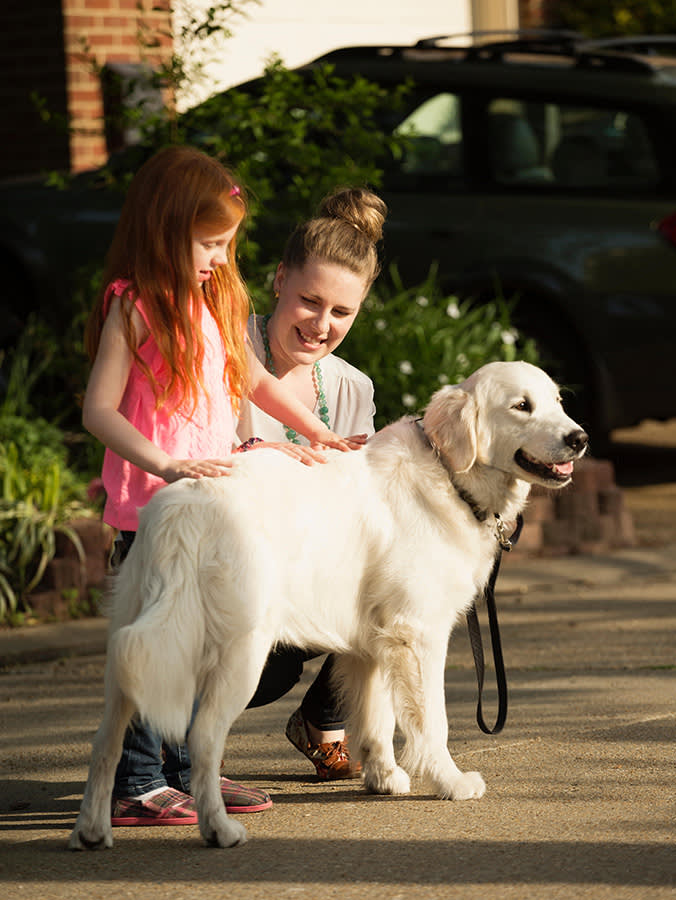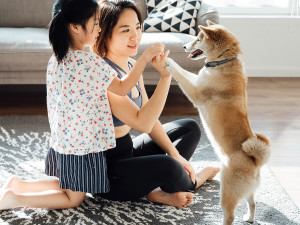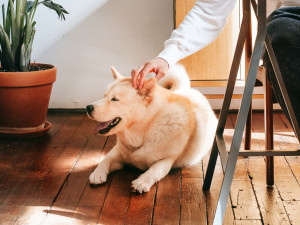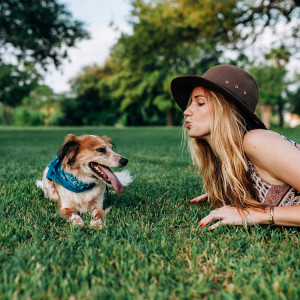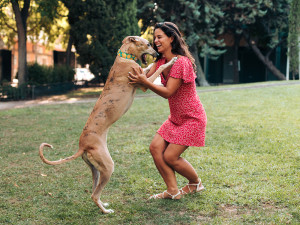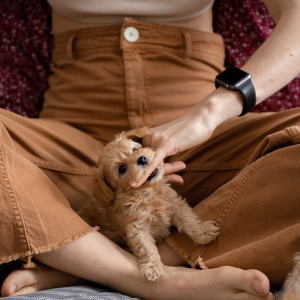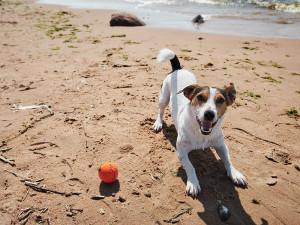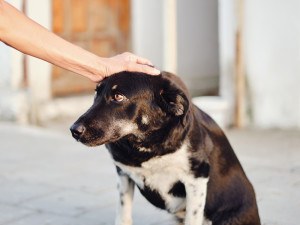Should Kids Approach Dogs in Public? The Internet Has Many Feelings
Considering this viral moment, trainers weigh in on what you should know about introducing dogs to kids.
The internet and trolling. It’s a relationship as symbiotic as organism and parasite. There was a time when this give-and-hot-take dynamic was mildly amusing, albeit still pretty annoying. Somebody would drop in and say something along the lines of, “Jordan could never compete in today’s NBA,” and pointless chaos would ensue. But like the sky in early December, things got dark quickly. Case in point, on the hellscape formally known as Twitter, one woman recently shared an encounter between her dog and a stranger’s child, and the discourse that followed quickly made the post go viral. Now, if you thought the split between Jordan and LeBron fans was hostile, you’ve never seen the battle between pet parents and human parents.
Saturday night, Lynne Schmidt, under the account @AbortionChat, posted a pictureopens in new tab of her dog, Zoë, to X, along with a short retelling of the incident. “Small child runs up to Zoë. I body block and say, ‘Maybe we don’t run up to dogs we don’t know.’ The parent: She’s three. Me: ‘If she isn’t on voice recall, maybe she should be leashed?” the post read. As of publication, the tweet has gathered over 23 million views and 2,500 replies. Thankfully, they were all very thoughtful, constructive, and respectful (my sarcasm should be screaming through the screen at you right now).
Trick question: All dogs are perfect! But find out which type is the best fit for you.
To represent the parent’s perspective, one account eloquently put it, “People >>>>>>>>>>>>>>>>>>> Animals.” Another added “If she’s a danger to children in public spaces, maybe she needs to be put down?” To which I say, OOF. Worth noting that Schmidt went on to add that her dog is a service animal.
Naturally, pet parents were also heated. “‘She's three.’ More of a reason you should be paying attention to your child and making sure they are not running up to dogs they don’t know,” one account replied. Another took the opportunity to not only show support for the animal but reminisce. “Honestly, I think that’s a great suggestion! I was a leashed kid and that’s probably a major reason why I’m still around,” they wrote.
How much do you spend on your pet per year?
Of course, others put their tin foil hats on and claimed the incident never happened at all — an increasingly common online response to anything unsettling that I do not have the patience or energy to dive into here. But what I do have time for are some tips to help human and pet parents in the real world minimize these situations and coexist peacefully on their daily trips to the park.
Always ask
For starters, parents should not let children approach strange dogs, and even dogs they have met before. “We should never assume a dog is friendly — even a dog we’ve petted or played with before,” explains Ali Smith, a dog trainer and founder of Rebarkableopens in new tab. “Because, like us humans, dogs have bad days or maybe feeling unwell, so always ask.” She adds that unless they’re familiar with the animal, kids should keep their distance from any dog that is alone, even if they’re behind a fence or gate. This is in the best interest of the child, dog, and each’s parents.
Lorrie Reynolds, a trainer who runs Maximum Fun Dog Sportsopens in new tab, adds that many dogs are frightened of children. But that doesn’t exclude pet parents from any responsibility here. “Handlers should instruct a child on how to approach their dogs, if their dogs are open to meeting children,” she says. “Otherwise, they should politely ask them to stop their approach.”
Every pup should have basic obedience training, including recall and simple commands like sit, before meeting children, explains Reynolds. The ideal situation is that dogs are socialized with kids when they’re young, but that is understandably not always an option, especially when you adopt.
Smith confirms that it’s also up to the pet parents to let an approaching child know if their pup is not up for intros. “Dog guardians can intervene and say ‘hello’ and ask the child to wait there for a moment and explain if the child can or cannot pet the dog, and how is best to do so. If you want to say no, then do so,” she explains.
Minimize risks
Now, let’s say all parties involved are on the same page and want this meeting to go down. There are several things to keep in mind that will help everything go smoothly and minimize risks. Ivan Petersel, dog trainer founder of Dog Wizardryopens in new tab, warns that children can often be around the same height as dogs, which causes some confusion for the animals. An extension of that concern is the opportunity for extensive eye-to-eye contact, something dogs may view as threatening.
Additionally, the way adults approach new pets is usually much different than how youngsters do it. “Kids move differently than adults and are often erratic and unpredictable,” Petersel says. “This can cause the dog to react with fear, aggression, etc.” As a result, pet parents and human parents should be keeping a close eye on the dog’s body language. If they’re jumping or lunging to play with the child, then the interaction should probably be stopped. Petersel adds that pups may not immediately understand a child’s boundaries and can end up hurting kids even when they’re just being playful.
Take it slow
After all these things are considered and an introduction seems reasonable, the most important thing is to take it slow. “Firstly, allow the dog to gently sniff the child if it feels safe and the dog’s body language is relaxed,” Petersel advises. He does not recommend, however, that the kid put their hand out. “The dog can smell your ankles, shirt, etc. No need to stick out your hand. A dog can smell a drop of blood in something that’s the size of an Olympic-sized swimming pool. Their sense of smell is incredibly strong, and there is no reason to create any risk.”
He says to wait until the pup is relaxing before having children gently brush their hand against the dog. Hovering above the animal is also a bad idea. Instead, let the dog slowly show them how they feel comfortable being pet and follow that lead. Reynolds adds that children should only pet them on the shoulder or side and never the head, ears, or tail.
You may have also noticed that none of these experts recommended the dog or child to aggressively attack one another and their beliefs on the world wide web before meeting. This is, evidently, some guidance a lot of us could all use.
